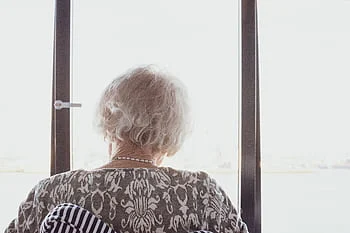There are 5.4 million Alzheimer’s patients within us.
You’d think it might be easy to seek out that a lot of participants for an attempt like this one.
But it’s not. and therefore the problem has enormous implications for treatment of a disease that terrifies older Americans and has strained families in numbers too great to count.
The Global Alzheimer’s Platform Foundation, which helps recruit participants for the Lilly trial estimates that to start finding participants, it'll need to inform 15,000 to 18,000 people within the right age groups about the trouble.
Of these, nearly 2,000 must pass the initial screening to be selected for further tests to see if they qualify.
Just 20 percent will meet the standards to enroll in Lilly’s trial: they need to be aged 60 to 89, have mild but progressive amnesia for a minimum of six months, and have two sorts of brain scans showing Alzheimer’s is underway.
Yet an 80 percent screening failure rate is typical for Alzheimer’s trials, said John Dwyer, president of the inspiration. there's just no great way to quickly diagnose the disease.
The onerous process of locating just 375 patients illustrates a grim truth: finding patients on whom to check new Alzheimer’s treatments is becoming an insurmountable obstacle —no matter how promising the trial.
With brain scans, lab tests, and memory tests, the value per diagnosis alone is daunting — as much as $100,000 for everyone that finishes up enrolled during a trial, Mr. Dwyer said —even before they start the experimental treatment.
Complicating the matter, the amount of trials has exploded in recent years. There are more than 100 Alzheimer’s studies trying to find a whopping 25,000 participants, Mr. Dwyer said.
To begin filling all of them, 37.5 million patients within the right age bracket would first need to be informed. one-tenth would be mentioned as an attempted site for screening.
Just 4 percent will move forward with an evaluation, and of those , just over 17 percent will drop out, given the present rate, leaving roughly 125,000 to be screened.
And with an 80 percent screening failure rate, that leaves 25,000 participants of the 37.5 million who were first informed.
The numbers make it clear: There’s no way scientists are getting to find 25,000 participants for all of the Alzheimer’s trials that are approved.
“The irony is that the science has never been brighter,” Mr. Dwyer said. “How many promising drugs are going to be abandoned or their evaluation seriously delayed? Some good science goes to be left on the cutting-room floor.”
These trials aren't just expensive; thus far, they need to be been expensive failures.
For the foremost part, researchers have focused on a target that seemed obvious and approachable: a protein, beta-amyloid, that starts to accrue in patients’ brains years before their memories falter.
It's believed to be the primary sign of Alzheimer’s disease.
For quite a decade, companies tried again and again with anti-amyloid drugs to slow or halt the disease, spending billions of dollars in clinical trials.
Lilly alone invested more than $3 billion. Pfizer, after a series of failures, announced in January that it had been getting out of the Alzheimer’s race altogether.
Yet the necessity is as urgent as ever. No treatments have yet been found to slow the degenerative brain disorder.
Lilly has an advantage: this is often a well-known company which will afford an active recruitment effort. it's studying a two-drug combination, the primary of its kind.
Even so, recruitment for the trial is going to be difficult, Mr. Dwyer said: Nine other trials are looking for patients with mild amnesia.
Some seek patients with no Alzheimer’s symptoms but who have genetic conditions or biomarkers — like telltale brain proteins — that make it very likely or almost certain they will develop the disease.
Other scientists are seeking people whose Alzheimer’s disease is already well underway.
Even worse: Most Alzheimer’s patients never believe entering an
attempt.
There are not any successful drugs that may fuel interest.
The patients are elderly and simply going to the trial sites is often difficult.
And Alzheimer’s patients tend to be seen by private doctors who don't realize or suggest trials.
The stigma of Alzheimer’s disease contributes to a natural tendency among patients and family members to deny or hide early signs of amnesia.
“It can take an extended time to urge a diagnosis,” said Dr. Ira Goodman, neuroscience medical director of Bioclinica Research in Orlando, Fla., a site for the Lilly trial.
“Even the first care doctors say, ‘Oh, don’t worry about it, you’re just getting older.’
”Another reason trials may need failing: Alzheimer’s diagnoses are wrong more often than is usually realized.
So patients who entered trials for Alzheimer’s drugs won't have had the disease.
Dr. Goodman and his colleagues studied the brains of 382 patients whose doctors gave them a diagnosis of dementia before death.
The autopsies showed that Alzheimer’s was not the explanation for dementia in 89 of them.
Yet 58 of these 89 patients, or 65 percent, had been incorrectly told that that they had Alzheimer’s. With a replacement sort of brain scan, rarely utilized in doctors’ offices, an Alzheimer’s diagnosis can be more precise.
Daniel Skovronsky, the chief scientific officer at Lilly, vigorously pushed for the new trial, arguing that previous studies that failed involved weaker drugs and tested only one drug at a time.
So his plan is to use one experimental drug that stops the poisonous amyloid from being made and another experimental drug that clears away amyloid already produced within the brain.

0 comments:
Post a Comment